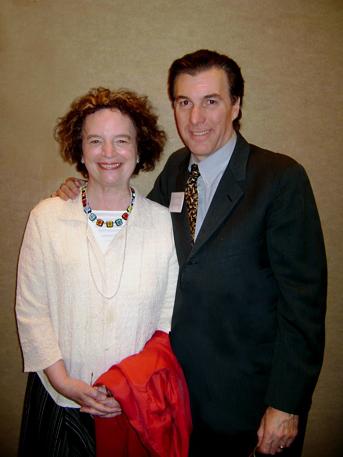 Part 1 of this blog Jan. 23 concluded that by 1978,
Part 1 of this blog Jan. 23 concluded that by 1978,
Dr. Mary Ainsworth’s estimate for U.S. babies was that (A) 23% were Avoidant insecure (avoid parents); (B) only 69% were Securely Attached; and (C) 8% were Ambivalent insecure (unhappy and indecisive). In the next 10 years, Ainsworth’s Strange Situation study was done worldwide — with the same three categories — on 2,000 infant-parent pairs in 32 different studies, in 8 countries. Some countries’ results varied, but the global results averaged out the same as Ainsworth’s 1970s studies.[FN1]
In 1973 Mary Main [left with fellow researcher Erik Hesse] became Ainsworth’s grad student at Johns Hopkins in Baltimore, working on the Strange Situation experiments from the start. After her doctorate, Main moved to Berkeley, to see if Ainsworth’s Kampala and Baltimore findings would replicate. [FN8] In 1978 Main ran a Strange Situation study of 189 Bay Area infant-parent pairs and had the same findings, reported in Ainsworth 1978. [FN10]
But by 1979 Dr. Main was making her own discoveries—out of concern about the parents. “In none of Ainsworth’s original observations was the possibility considered that some mothers… could also be frightening,” Main notes. “For my dissertation at Johns Hopkins, I watched 50 children in the Strange Situation… Using Ainsworth’s three-part classification (secure, avoidant and ambivalent), I found at least five infants could not be classified.” Ainsworth was concerned, too; in fact, she’d left some babies in her Secure set only since they didn’t fit her other two sets. [op cit FN8]
By 1982, Main decided to “extend attachment theory to include the import of infant exposure to anomalous fear-arousing parental behaviors… The mother is the haven of safety that must be approached in times of danger. However, when the infant’s biologically channeled haven of safety has
simultaneously become a source of fright, the infant is placed in an irresolvable and disorganizing approach-flight paradox,” she said. [op cit FN8]
Soon after 1982, Main and Ainsworth agreed that 14-15% of babies actually belong in a new, fourth category: (D) Insecure Disorganized. Their mothers were so frightening that the babies couldn’t develop any consistent response at all. These infants “exhibited a diverse array of inexplicable or overtly conflicted behaviors in the parent’s presence” including “disorganization, disorientation, and confusion.” This includes crying loudly then suddenly freezing; ignoring the parent to rock on hands and knees; moving away; raising hand to mouth in fear; or even swiping at the parent’s face. They seemed vulnerable to dissociation. [FN11] [op cit FN8]
This finding that a whopping 15% of average U.S. babies are so insecure they’re almost incoherent was so shocking, it was checked for years, not published until 1986, and not used as a formal 4th category until after 1990 (the delay confused many scholars during 1982-1990). [FN12]
But the number held. Worse, among children of American adolescent mothers the rate is over 31%, and is over 25% in many Third World nations. [FN13]
And: to remove the 14-15% of disorganized babies from Ainsworth’s original 69% Secure, would reduce the Secure set to only 54-55%. What was up with parents that 45-46% of their kids couldn’t manage secure attachment? (If so, Main would have four categories: Avoidant 23%, Ambivalent 8%, Disorganized, 14-15%, Secure 54-55%.)
Here Comes the AAI
But by 1982 Main had seen enough to begin developing the Adult Attachment Interview (AAI). She’d seen plenty of disorganized babies – that meant a lot of scary parents. She needed a way to document the behavior of parents.... READ MORE....




Comments (2)